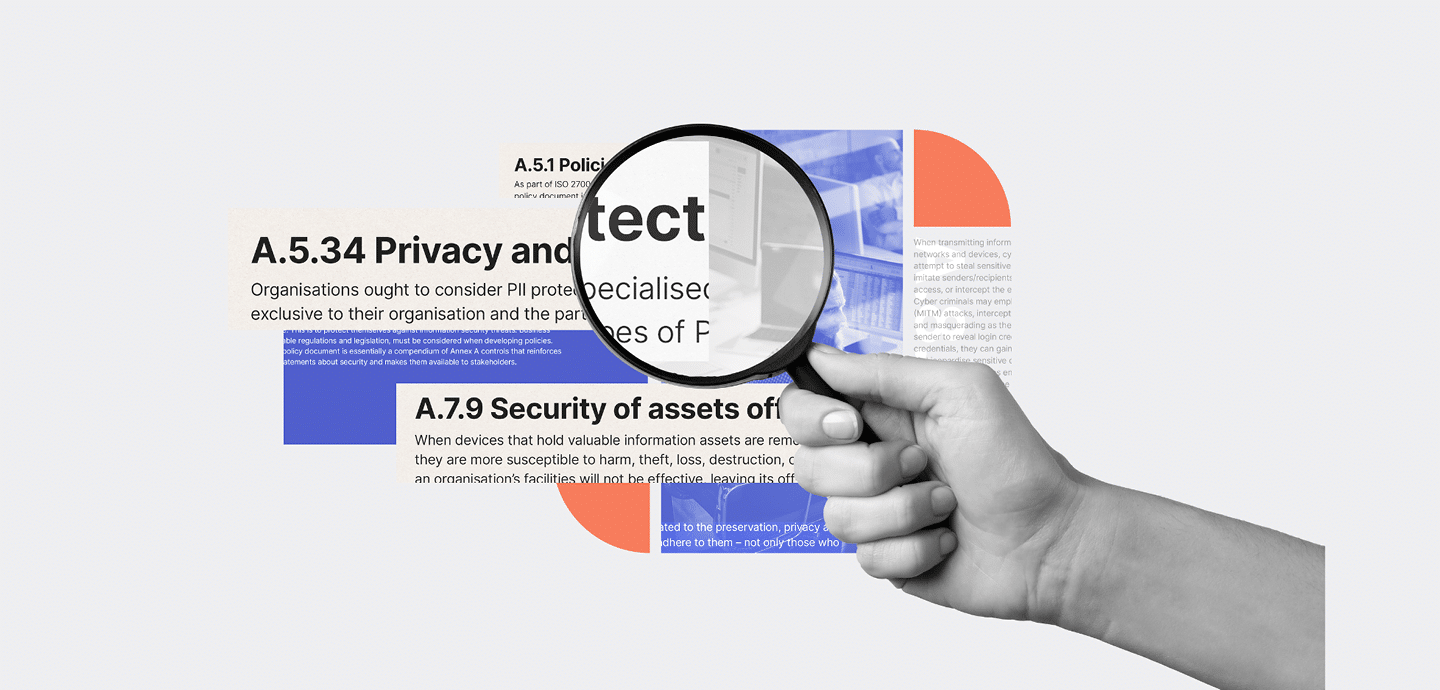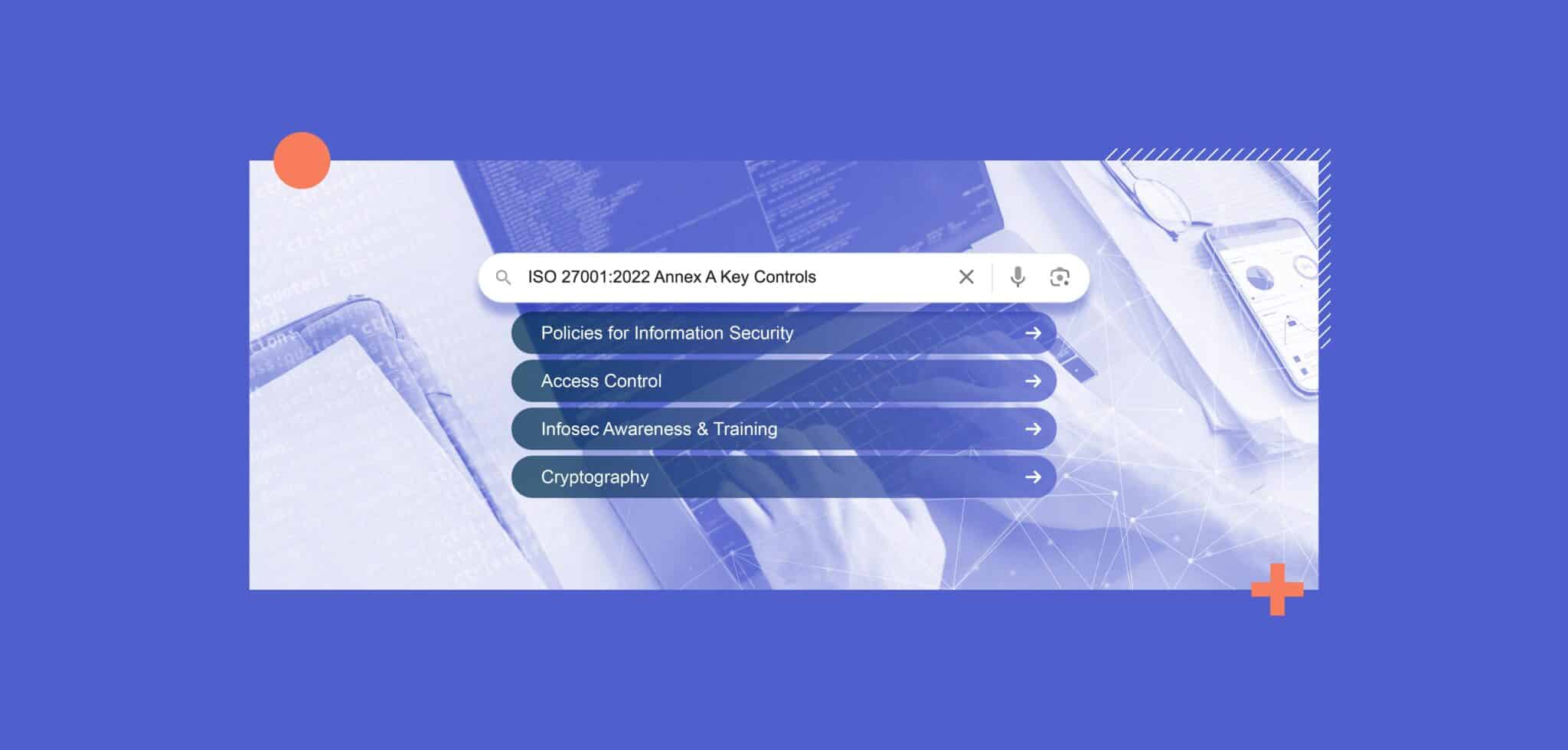
Unlock Your Competitive Advantage with ISO 27001
Table Of Contents:
- 1) Understanding ISO 27001
- 2) The Competitive Edge of ISO 27001 Certification
- 3) Achieve Enhanced Risk Management
- 4) What Does Risk Management Look Like?
- 5) Improve Business Efficiency With ISO 27001
- 6) ISO 27001 Compliance and Legal Advantages
- 7) Steps to Achieve ISO 27001 Certification
- 8) Is ISO 27001 Your New USP?
In our digital age, businesses can access more sensitive customer data than ever. Consequently, they must take appropriate steps to protect that information or risk financial and reputational consequences. The 2023 IBM Cost of a Data Breach report found that the average cost of a data breach reached an all-time high of $4.45 million.
How can organisations better protect sensitive customer data? ISO 27001, a globally recognised information security standard, is a robust route to improved cybersecurity. The standard provides a framework for maintaining and continuously improving your business’s approach to information security.
Data protection is now a critical consideration and demonstrating your business’s commitment to data security with ISO 27001 compliance offers a real competitive advantage.
Understanding ISO 27001
ISO 27001 was developed to provide a framework and guidelines for establishing and maintaining an information security management system (ISMS).
An organisation’s ISMS comprises its policies, procedures, and controls for protecting and managing its information. Therefore, implementing, continuously monitoring, and reviewing an ISO 27001-certified ISMS can help your organisation adopt information security best practices and mitigate risks to crucial information assets.
The latest version of ISO 27001 was released in October 2022. It encompasses four clauses:
- Organisational controls
- People controls
- Physical controls
- Technological controls.
These clauses correlate to ISO 27001’s core attributes:
- Control types
- Information security properties
- Cybersecurity concepts
- Operational capabilities
- Security domains.
ISO 27001 compliance can be achieved without certification; however, certification signals to your customers, stakeholders and prospects that your business takes a proactive approach to information security. To achieve certification, an accredited ISO certification body must audit your ISMS to ensure it complies with ISO 27001. If successful, your organisation will be issued a certificate valid for three years.
The Competitive Edge of ISO 27001 Certification
In many highly regulated industries, ISO 27001 is required as standard within a new supplier contract, making ISO 27001 certification a distinct competitive advantage – not only desirable but mandatory.
In addition, ISO 27001 certification can be an attractive benefit for potential customers who do not contractually require information security certifications. Working with secure suppliers reduces their risk of supply chain breaches and assures that their business data is securely managed.
In short, proving that your organisation has a stable, continuously monitored security posture with ISO 27001 can be a significant differentiator in a competitive environment. Having an ISO 27001-certified ISMS shows an ongoing commitment to data security, helping you to build customer, stakeholder and supplier trust.
Achieve Enhanced Risk Management
Risk management is an essential facet of ISO 27001 compliance. Broadly, ISO 27001 clause 6.1, actions to address risks and opportunities, requires your business to determine potential risks and opportunities, undertake risk assessments based on each risk’s likelihood and impact, and develop a risk treatment plan.
The process of treating a risk can take one of the following forms:
- Accept the risk, for example, if the cost of treating the risk is greater than the potential damage
- Treat the risk, such as by implementing specific ISO 27001 security controls
- Transfer the risk, for example, by purchasing insurance
- Avoid the risk by preventing circumstances where it could occur.
What Does Risk Management Look Like?
Your business should look to treat risks related to your third-party suppliers. ISO 27001 requires that your information security policy for supplier relationships discusses how your business mitigates risks associated with any supplier that may access, process, store or provide IT infrastructure components to your business’s information.
One way to treat the risk of a third-party supplier disclosing your business information in a data breach would be to implement access controls, limiting the supplier to the minimum amount of information it needs to supply services to your organisation. You may also require your suppliers to be ISO 27001 certified, which would reduce the risk of your suppliers suffering from a data breach and ensure the supplier has processes in place should a breach be successful.
Effective risk management using the ISO 27001 framework ensures that your management team can make informed decisions based on risk awareness. It also ensures risks are appropriately treated and assigned to risk owners, improving business resilience through robust risk treatment.
Improve Business Efficiency With ISO 27001
Continual improvement is a requirement in several areas of ISO 27001, including risk management, policy reviews, internal audits, and more. It ensures your business consistently identifies and responds to potential risks, and it’s the hallmark of a business committed to maintaining a strong ISMS.
The ISO 27001 standard provides a framework for unlocking business efficiencies. During implementation, you will clearly define the processes and procedures required to protect your business, proactively identify and manage potential risks, and reduce the likelihood of security incidents like data breaches.
In addition, you can avoid duplication of tasks by aligning with the information security roles and responsibilities outlined in the first step of ISO 27001 implementation. This allows your team to focus their efforts on specific, pre-defined responsibilities.
ISO 27001 Annex A.6.3 stresses the importance of information security awareness, education and training, encompassing your top management team and all staff across your organisation. Complying with this requirement enables you to reduce the risk of security issues caused by human error while arming your team with the knowledge needed to identify and report potential security risks.
ISO 27001 Compliance and Legal Advantages
ISO 27001 implementation enables you to address legal, statutory and regulatory requirements relevant to your industry and geography. Control 5.31 requires that you define and document processes and responsibilities to understand your business’s legislative and regulatory obligations relating to information security.
Assigning this responsibility when building your ISMS team at the beginning of the compliance process is a good idea. The responsible person should ensure that your organisation is up to date with and documents legislation and regulations that impact your ISMS.
For many businesses, it’s essential to address regulations such as the European Union General Data Protection Legislation (GDPR) and California Consumer Privacy Act (CCPA) as well as industry-specific standards such as Payment Card Industry Data Security Standard (PCI-DSS) and the Gramm-Leach-Bliley Act (GLBA).
One benefit of ISO 27001 compliance is that many ISO 27001 information security requirements align directly with data protection requirements, so you can easily measure your level of compliance with critical regulations.
Steps to Achieve ISO 27001 Certification
Broadly, the ISO 27001 compliance and certification process can be split into the following four steps.
Step 1: Plan
Your first step should be to establish your organisation’s goals for ISO 27001 implementation, such as protecting sensitive customer data and mitigating the risk of successful security incidents.
Familiarise yourself with the ISO 27001 standard, and identify areas of your business you will need to focus on and processes that you may need to formalise to meet requirements. Next, assemble your ISMS team – assign responsibilities and document this step. Ensuring you have top management buy-in before commencing is also vital!
Consider your available resources and any deadlines you may have. Using technology such as ISMS.online’s information security solution can drastically reduce the internal resources you require to get ISO 27001 certified, offering pre-built tools, templates, a virtual coach and an Assured Results Method (ARM), which has seen 100% of our customers using this achieve ISO 27001 certification on their first attempt.
Step 2: Scope
Consider the needs of interested parties, such as your management team and stakeholders, as they relate to your ISMS. These needs will help you define your information security objectives; you can then define the scope of your ISMS based on the needs and objectives you’ve identified.
In the scoping stage, you should also identify the business assets that need to be protected: digital and physical assets, as well as people such as your employees and contractors. You will need to develop an asset inventory as part of this.
Step 3: Implement
In this stage, you will do the bulk of the work to become ISO 27001 certified successfully. You’ll:
- Identify risks to your assets
- Undertake risk assessments and treatments
- Create your policies, procedures and processes in line with ISO 27001 controls
- Create your statement of applicability (SoA) to address controls you have implemented and outline the reasoning behind controls you’ve chosen not to implement
Investing in employee training and awareness during the implementation phase is also essential. This allows you to educate your team on their responsibilities regarding information security within your business and ensure they have the skills to identify and report potential security threats. Employee education also reduces the risk of security incidents via human error, such as an employee clicking on a phishing link in an email.
Step 4: Evaluate and audit
Once you’ve addressed mandatory ISO 27001 controls and any additional controls you’ve identified as relevant, you should review your ISMS against your objectives. This includes management reviews and internal audits in preparation for your external audit. An ISO 27001 certification body should carry out your external audit, which, if successful, will result in certification that lasts for three years with yearly surveillance audits.
Because continual improvement is central to the ISO 27001 standard, you should continue to evaluate and improve your ISMS even after certification. Regular management reviews, internal audits, renewed risk assessments, and ongoing staff training are all ways to ensure your ISMS grows with your business.
Learn more about the certification process in our Proven Path to ISO 27001 Success guide, which provides in-depth insight into the process.
Is ISO 27001 Your New USP?
ISO 27001 certification not only allows you to reduce the risk of data breaches and security incidents for your business, but it’s also a strategic step that positions you as a robust, secure organisation to your customers and prospects. Prove that you align with key legal and regulatory requirements while taking action to protect your sensitive customer data and demonstrate that your business is committed to continuous improvement.
You can unlock your new competitive advantage with ISMS.online, technology that streamlines your path to ISO 27001 compliance and certification so you can focus on winning more customers. Book your ISMS.online demo today.




